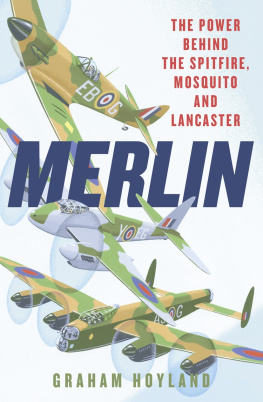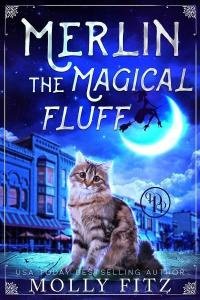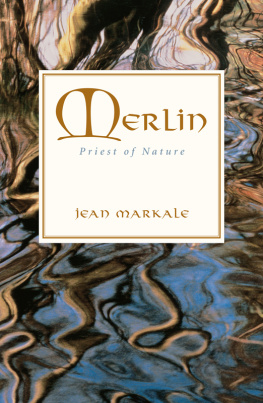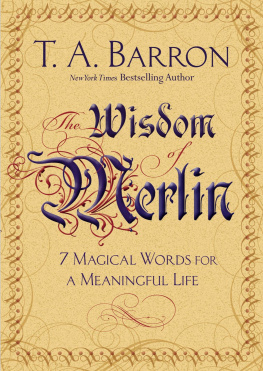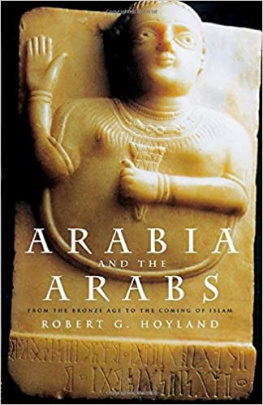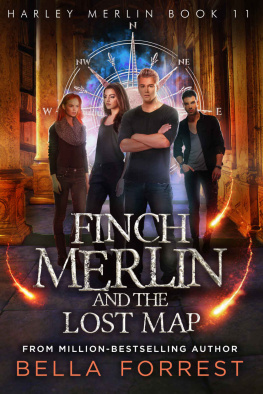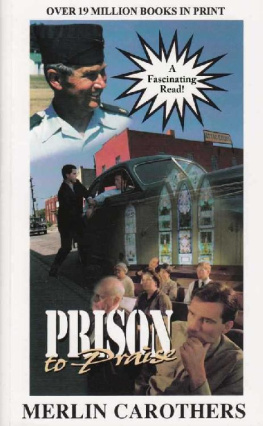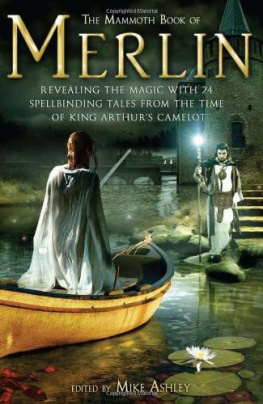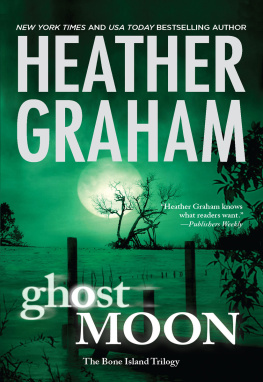Graham Hoyland - Merlin
Here you can read online Graham Hoyland - Merlin full text of the book (entire story) in english for free. Download pdf and epub, get meaning, cover and reviews about this ebook. year: 2020, genre: Non-fiction. Description of the work, (preface) as well as reviews are available. Best literature library LitArk.com created for fans of good reading and offers a wide selection of genres:
Romance novel
Science fiction
Adventure
Detective
Science
History
Home and family
Prose
Art
Politics
Computer
Non-fiction
Religion
Business
Children
Humor
Choose a favorite category and find really read worthwhile books. Enjoy immersion in the world of imagination, feel the emotions of the characters or learn something new for yourself, make an fascinating discovery.
- Book:Merlin
- Author:
- Genre:
- Year:2020
- Rating:3 / 5
- Favourites:Add to favourites
- Your mark:
- 60
- 1
- 2
- 3
- 4
- 5
Merlin: summary, description and annotation
We offer to read an annotation, description, summary or preface (depends on what the author of the book "Merlin" wrote himself). If you haven't found the necessary information about the book — write in the comments, we will try to find it.
Merlin — read online for free the complete book (whole text) full work
Below is the text of the book, divided by pages. System saving the place of the last page read, allows you to conveniently read the book "Merlin" online for free, without having to search again every time where you left off. Put a bookmark, and you can go to the page where you finished reading at any time.
Font size:
Interval:
Bookmark:

William Collins
An imprint of HarperCollinsPublishers
1 London Bridge Street
London SE1 9GF
WilliamCollinsBooks.com
This eBook first published in Great Britain by William Collins in 2020
Copyright Graham Hoyland 2020
Images individual copyright holders
Cover illustration by Neil Gower
Graham Hoyland asserts the moral right to be identified as the author of this work
A catalogue record for this book is available from the British Library
All rights reserved under International and Pan-American Copyright Conventions. By payment of the required fees, you have been granted the non-exclusive, non-transferable right to access and read the text of this e-book on screen. No part of this text may be reproduced, transmitted, down-loaded, decompiled, reverse engineered, or stored in or introduced into any information storage and retrieval system, in any form or by any means, whether electronic or mechanical, now known or hereinafter invented, without the express written permission of HarperCollins.
Source ISBN: 9780008359263
Ebook Edition April 2020 ISBN: 9780008359287
Version: 2020-04-20
To the many, who designed, built and serviced the Rolls-Royce Merlin engine
The Rolls-Royce Merlin was simply an astonishing engine. There have undoubtedly been aero engines that were better designed; it is possible but unlikely that there have been some that were better made; but beyond a shadow of a doubt there has never been another engine more thoroughly, continuously, aggressively, successfully and amazingly developed than the Merlin.
The story of the aero engine is as rich and strange and wonderful as anything found in the science and art of the Renaissance. In just 50 years, driven by two world wars and intense national competition, piston engines increased from a couple of horsepower to several thousands. In so doing they realised the eternal dream of humanity: the surreal experience of flight.
Far from the oily and inconvenient machines of popular imagination, these piston engines were dynamic sculptures of polished metal, designed using the intense application of physics, mathematics, metallurgy, chemistry and endless rigorous experimentation. The breakage of the tiniest part of many hundreds could lead to disaster and death. The failure of an engine design could lead to the loss of a war, because the Second World War above all others was decided through air power: all the decisive campaigns were won or lost by piston-engined fighters and bombers. The winner would be the side that could build the most powerful and reliable aero engines, and in this war the winner would take all.
The children ran around the school playground, arms extended, machine-gun thumbs out, shooting down their opponents in mock dogfights. The Second World War was only 20 years distant and most of their fathers had served in the forces. There was a wartime RAF station on the hill. I was reading the Biggles books by then and the Spitfire was the magic name on everyones lips. The noises we were making, I now realise, were a childish imitation of the Merlin engine.
Later, thanks to help from kindly adults, I became interested in repairing piston engines. I marvelled at the finely carved pieces of metal that I knew grew into weights of over a ton at high speed. I saw the consequences of engines that burst from too many revs or seized due to the lack of oil.
Then one evening in the Peak District, many years later, I heard a distinctive drumming roar in the sky and, looking up, saw the elegant elliptical wings. It was a lone Spitfire heading home into the sunset after a day at a display somewhere in the South. I became curious. What was a Merlin engine? Why was it held in such esteem by aviation historians? Was it true that this was the engine that won the war? And had a wealthy woman really been behind both the engine and the aeroplane?
The Rolls-Royce Merlin was the aero engine that powered the Supermarine Spitfire, the Hawker Hurricane, the de Havilland Mosquito and the Avro Lancaster bomber, the aircraft that together turned the tide of the Second World War.
Eighty years ago, the distinctive roar of Derby-built Merlins was heard over the fields of southern England during the summer of 1940 as the Few fought hordes of German aircraft during the Battle of Britain. Without such a powerful and reliable power unit at such a crucial time Britain would have lost the battle for the skies and the war could well have been won by the Axis powers.
It nearly didnt happen. At the last minute a wealthy benefactress, Lady Lucy Houston, had to provide the funds for the Rolls-Royce R racing engine that sired the Merlin. Her money helped to nurture the new power unit. However, the Merlin had growing pains, being troublesome in its development and slow to come to maturity.
This story of powered flight is a story of our species at its best and worst: human inventiveness versus intellectual theft; human persistence versus jealousy and duplicity; human patriotism and courage versus hatred and dogma.
Non est ad astra mollis e terris via
There is no easy way from the earth to the stars

The Langley Aerodrome in flight just. (Hulton Archive/Getty Images)
As a child Albert Einstein was given a Russian toy steam train by a favourite uncle. Three years after winning the Nobel Prize for Physics he wrote to Caesar Koch to thank him once again. Einstein, the author of the theory of relativity, maintained that it was the steam engine that initiated his interest in science.
Steam engines are easy to understand and easy to love, as Thomas the Tank Engine shows. Fuel, either alcohol in the case of Einsteins toy or coal in a full-sized engine, is burned outside a water-filled boiler. This is external combustion. Steam is generated and tries to expand a thousandfold in volume. It passes through pipes and valves into a cylinder, where it pushes a piston down. The piston is connected by a rod to a crank which drives a wheel round, which drives the steam engine along. You can see the whole process going on, together with delightful smells of fuel, hot oil and smoke and the vision of an animate machine with long metal legs and pumping lungs.
The brilliance of the invention of the internal combustion piston engine was that it dispensed with a man shovelling coal, the filthy firebox, the water, steam and heavy boiler, and instead burned petroleum fuel inside the cylinder. Everything else pistons, connecting rods, crankshafts and flywheels remained recognisably related to steam engines. Sadly though, these engines are hard to appreciate in the same way as steam. If you lift the engine cover of a car all you can see is an immobile cylinder block made of aluminium or cast iron, and all you can hear is the whirring and clicking of innumerable parts: valves, camshafts, pistons and crankshafts. Its all going on inside. Drive or fly behind a piston engine, though, and listen to the operatic howl of many cylinders, and your soul may begin to be stirred by something beyond words.
The story of the piston aero engine is surely the most romantic story in engineering history. Heavier-than-air machines were dreamed of but literally could not take off until light and powerful internal combustion engines were built. Steam engines were simply too heavy.
Mankind had always dreamed of flight. And made up stories about flight. According to the scholar Ben Sherira, flying carpets were issued to readers in the ancient library of Alexandria (
Font size:
Interval:
Bookmark:
Similar books «Merlin»
Look at similar books to Merlin. We have selected literature similar in name and meaning in the hope of providing readers with more options to find new, interesting, not yet read works.
Discussion, reviews of the book Merlin and just readers' own opinions. Leave your comments, write what you think about the work, its meaning or the main characters. Specify what exactly you liked and what you didn't like, and why you think so.

